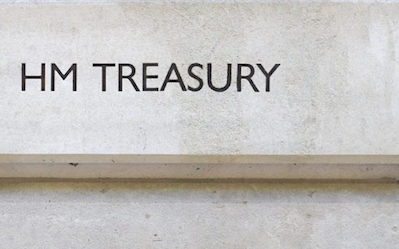UK government borrowing totaled £51.4 billion between April and July — the first four months of the financial year — which was £4.7 billion more than the UK’s Office for Budget Responsibility (OBR) had expected.
The UK’s Office for National Statistics (ONS) said: “Borrowing in the financial year to July 2024 was £51.4 billion, £0.5 billion less than in the same four-month period a year earlier but the fourth highest year-to-July borrowing since monthly records began in January 1993.
“Public sector net debt excluding public sector banks was provisionally estimated at 99.4% of gross domestic product (GDP) at the end of July 2024; this was 3.8 percentage points more than at the end of July 2023, and remains at levels last seen in the early 1960s …”
The ONS said its estimate of UK public sector debt remains largely unchanged at £2.74 trillion.
“The £3.1 billion borrowed in July 2024, combined with a downward revision of £1.5 billion to our previously published financial year-to-June 2024 borrowing estimate, brings our provisional estimate for the total borrowed in the financial year to July 2024 to £51.4 billion,” said the ONS.
“This was £0.5 billion less than was borrowed in the same four months last year, but £4.7 billion more than the £46.6 billion forecast by the Office for Budget Responsibility for this period …”
The ONS added: “Of the £51.4 billion borrowed by the public sector (excluding public sector banks) in the financial year to July 2024, central government borrowed £79.2 billion.
“This larger central government borrowing was partially offset by a £15.9 billion Bank of England (BoE) surplus and balanced by remaining subsectors.
“The borrowing of both subsectors is affected by payments totalling £23.6 billion made by central government to the BoE in this period under its Asset Purchase Facility Fund (APF) indemnity agreement.
“As with similar intra-public sector transactions, these payments are public sector borrowing neutral. They increase central government’s borrowing by £23.6 billion compared with the same period the previous year but reduce the borrowing impact of the BoE by an equal and offsetting amount.”
Isabel Stockton, Senior Research Economist at the UK’s Institute for Fiscal Studies (IFS), said: “Today’s figures suggest that day-to-day spending by central government on goods and services between April and July was £140 billion, up by 5% on the same months in 2023.
“It is also some £6 billion above the forecast for those months in the March Budget. In just four months – or one-third – of this financial year the government appears to have spent 34.1% of what was budgeted for the whole year, whereas since comparable data began in 1997 it has never spent more than 32.9% of the eventual total in the first third of the financial year.
“This is indicative of the scale of the pressures on departmental budgets – in some cases well above what was budgeted for.
“Tax revenues – despite economic growth in the first quarter of the financial year surpassing some of the more pessimistic expectations – are running close to forecast or, if anything, slightly behind.
“This, combined with higher spending, leaves borrowing higher than forecast. In the first four months of the financial year borrowing was £51 billion, essentially the same as in the same months last year, but £5 billion higher than what was forecast to be borrowed in those months in the March Budget.
“All of these data are preliminary and we should be cautious of over-interpreting them. But the early signs are that better-than-expected growth figures won’t be enough to save Rachel Reeves from tough choices in her first Budget on 30 October.
“The combination of in-year spending pressures identified at last month’s spending audit and the ongoing, and well-known, pressures facing many public services suggest that the accompanying spending review for 2025-26 could be a particularly difficult exercise.”
